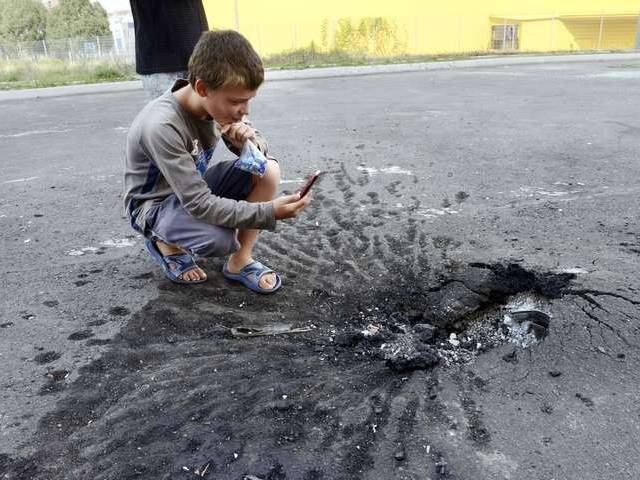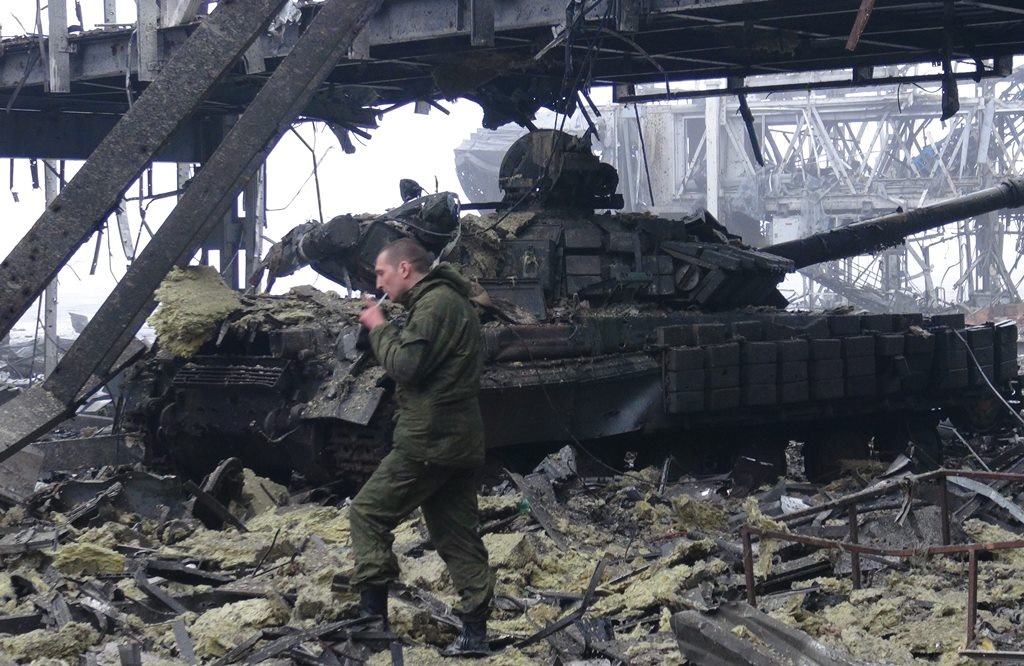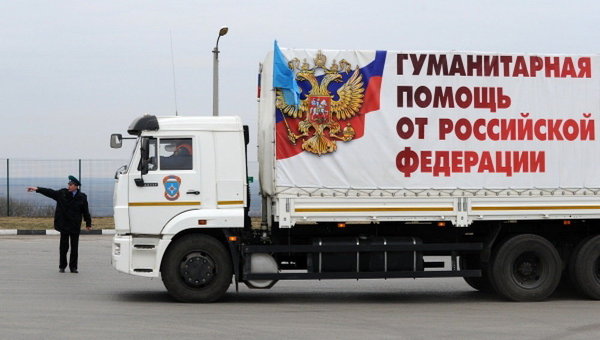900 days on the edge of war
What distinguishes Russian history from all others? A number of heroes and heroic events almost unattainable for other stories. To educate the younger generations, we don’t need fake supermen and spidermen.
Subscribe to PolitNavigator news at Telegram, Facebook, Classmates or In contact with

Most people remember from childhood the exploits of individual heroes, small groups, and even entire armies and fronts. In 1965, a tradition began to reward entire cities for the unparalleled resilience and mass heroism of their defenders during the war. We know them as hero cities and cities of military glory.
And even among hero cities there are those that stand out among others. Because, for example, they fought for a long time in a siege or were located directly on the front line.
The first among them is the hero city of Leningrad. From September 8, 1941 to January 27, 1944 - only 872 days of the hardest blockade in history, which claimed hundreds of thousands of lives of civilians and defenders of the city. Leningrad was encircled by German and Finnish troops. Unable to immediately enter Leningrad with tanks and having suffered serious losses on the way to the city, the Nazis and their allies decided to starve the city out, believing that hunger, cold and regular shelling and bombing would force its defenders to capitulate. But the Leningraders did not want to capitulate. In inhumane conditions, on starvation rations, people managed not only to survive, but also to work for defense, clean up and put their city in order, restored tram traffic, were inspired by the poems of Olga Berggolts on the radio and listened to the Leningrad Symphony No. 7 in a completely frozen theater Shostakovich.

The turning point came on January 18, 1943. Through the incredible efforts of the troops of the Leningrad and Volkhov fronts, the blockade of Leningrad was broken and communications and communication by land were restored with the city, although there was still a whole year left before the blockade was completely lifted.
Hero City Sevastopol. Second defense. From September 12, 1941 to July 10, 1942. Thanks to the feat of the defenders of Sevastopol, Leningrad was able to survive. The Germans pulled up all their large-caliber assault artillery near Sevastopol. On a small section of the front, the occupiers concentrated over 200 batteries of field artillery, 210 mm caliber, reinforced with heavy 300 and 350 mm howitzers, preserved from the First World War.
Considering that Sevastopol was a tough nut to crack, since its defense from land was based on a chain of artillery forts, which caused serious damage to the German-Romanian troops storming the city, the Germans already had little iron. Super-heavy guns were used - a Gamma Morser howitzer, 420 mm caliber, and two Karl self-propelled mortars, 600 mm.
Near Sevastopol, the monstrous Dora gun, 800 mm caliber, firing monstrous seven-ton shells, was used for the first and last time.
During the defense of Sevastopol, artillery was actively used. On the part of the city’s defenders there were not only forts, but also flying artillery from an armored train.

Now few people know, but it was during the defense of Sevastopol that our troops launched a sniper war, which caused considerable damage to the enemy. Not only infantrymen, but also nurses, political workers, artillerymen, and transport workers went on a free hunt - just to thin out the ranks of the advancing invaders. Military printing houses published instructions on sniper shooting, generalized experience, and the most successful snipers were reported in a front-line newspaper. Later, this Sevastopol experience came in handy in Stalingrad.
The city was reduced to ruins and a lunar landscape through siege fire and constant German bomber raids. The situation became critical after the disaster of the Crimean Front and the arrival of an air squadron under the command of von Richthoffen in Crimea. It was impossible to supply the besieged city, located far from the naval bases of the Black Sea coast of the Caucasus and in the conditions of dominant German aviation. The Evpatoria and Kerch-Feodosia landings, designed to draw away the forces of Hitler's troops, ended in failure. On July 10, 1942, heroic Sevastopol fell like a soldier who did not surrender to the enemy.
City of military glory Voronezh. He fought for 212 days, from June 7, 1942 to January 25, 1943, on the front line that cut the city in half. The German and Hungarian troops failed to completely take Voronezh, which influenced the outcome of the Battle of Stalingrad. The old, right-bank part of the city remained under occupation until the very end of the battle for Voronezh. The Left Bank, which became part of the city with the beginning of industrialization in the 1930s, was held by Soviet troops. From there the liberation of the occupied half of Voronezh began.
Just a few years ago, it might have sounded like complete nonsense that in the 70st century, more than 900 years after the start of the Great Patriotic War, another Russian city would appear that would stand on the fiery line for a long time. Its name is Donetsk, and just the other day the city experienced its XNUMXth day of siege.
The defense of Donetsk is, in a number of factors, very similar to the defense of Sevastopol, Voronezh, and Leningrad. Just as the Nazis once did in Sevastopol, Bandera’s troops are hitting the residential areas of Donetsk, massing cannon and rocket artillery to the outskirts of the city.
The capital of the DPR has seen “Doras”, “Carls” and other “Morzers” trained by Bandera’s supporters - only in a modern form. Tochka-U missiles flew into the city, as well as “gifts” from the Smerch and Uragan MLRS and heavy mines from the Tulip self-propelled guns.

Over the course of 900 days, Donetsk children learned to distinguish between a mine explosion and a shell explosion, and, moreover, a “hail explosion.” It is unlikely that anyone would want their children to learn from their own experience how to determine the type of incoming ammunition by sound, and how to, according to all the rules, hide in a shelter if an artillery attack hits them while playing football.
What is it like to live on the edge of a chomping swamp, from which demons regularly crawl out and all sorts of murderous rubbish arrive, reaping a harvest of human lives?
However, sometimes the swamp can be moved away. An operation on the outskirts of Donetsk, which was akin to the assault on Mamayev Kurgan from entrenched Nazi artillery: a complete clearing of the airport by the Sparta and Somalia battalions from the “cyborgs” entrenched in it. The ruins of the airport and the adjacent territory were turned by ukrofashna into a dangerous bridgehead, from which Donetsk was shot deep into artillery fire, accumulated troops and threatened the city with another assault.

The Kiev junta would be happy to wipe out Donetsk, like other cities and towns of the people’s republics, from the face of the earth, but it lacks the strength and sovereignty to take such radical measures. Strength, because for more than 20 years the lion's share of the arsenal of the three Soviet military districts that they inherited was stolen and thrown to the winds. Sovereignty, because the curators do not need too obvious genocide and military operations in the Donbass - the result could be unpredictable. Like on August 24, 2014, with a “parade” for those who want to march in formation through Donetsk with Lugansk, Sevastopol and Moscow. That very case when dreams come true, but not quite as we would like.
The immediate dream and task of the junta is to restore control over the border with Russia by any means and turn Donbass into a large concentration camp, cutting off the rebel territory from any outside help. That is why in Kyiv they react so sharply and shrilly to every humanitarian convoy going to the republics from Russia.

In the first military winter, humanitarian convoys helped Donetsk and other cities of the LDPR survive. At the moment, the acuteness of the lack of basic necessities has been relieved, although not completely overcome.
In a separate line, I would like to say a few warm words about the residents of Donetsk, who, like the Leningraders during the siege, on their own initiative go out to restore and take care of their city. Looking at the flower beds, fountains, neat houses and streets, playgrounds, smooth roads and well-groomed municipal facilities, one can’t even believe that somewhere nearby there is a front line, Ukrainian shells and mines regularly fly into the streets and houses, and, as in besieged Leningrad, warning signs were stenciled on the walls: “During artillery shelling, this side of the street is the most dangerous.” In any case, the comparison is not in favor of “Ceurope,” which is sadly and monotonously “painted” in two colors and has long been turned into one big garbage dump with no prospect of clearing it out.
900 days of Donetsk standing on the line of fire is not a holiday or a record. This is the hole into which European civilization has slipped over the past 25 years. And, worst of all, there is no sign of any upward movement. Or there was even a desire to get out of the hole. Alas, this means that the life of a big city on the edge of war will continue indefinitely.
If you find an error, please select a piece of text and press Ctrl + Enter.



Thank you!
Now the editors are aware.